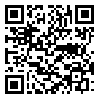Volume 13, Issue 47 (fall 2009)
2009, 13(47): 423-435 |
Back to browse issues page
Download citation:
BibTeX | RIS | EndNote | Medlars | ProCite | Reference Manager | RefWorks
Send citation to:



BibTeX | RIS | EndNote | Medlars | ProCite | Reference Manager | RefWorks
Send citation to:
Abbasi S, Farzanmehr H. Optimization of Extracting Conditions of Inulin from Iranian Artichoke With/without Ultrasound Using Response Surface Methodology . Journal of Crop Production and Processing 2009; 13 (47) :423-435
URL: http://jcpp.iut.ac.ir/article-1-1065-en.html
URL: http://jcpp.iut.ac.ir/article-1-1065-en.html
, sabbasifood@modares.ac.ir
Abstract: (11305 Views)
Nowadays, Inulin, due to its nutritional properties, is widely being used all over the world. Artichoke tuber is one of its major industrial extraction sources. Therefore, in the present study we initially aimed to determine total carbohydrate, inulin, reducing sugars as well as dry matter contents of an Iranian artichoke. Thereafter, we focused on the optimization of aqueous extraction of inulin in the presence and absence of direct and indirect ultrasonic waves at various combinations of extraction time, temperature and solvent:solid ratio using Box-Behnken design and response surface methodology (RSM). Based on the experiments, the dry matter and total carbohydrate contents of Iranian artichoke were 6.7 and 3.9%, respectively. We also found that an empirical model developed by RSM could satisfactorily describe relationship between independent parameters and the yield of total carbohydrate as well as inulin. Furthermore, our findings revealed that optimal aqueous extraction of inulin could be achieved at 80ºC, for a duration of 5 min at a solvent:solid ratio of 1:5. Moreover, a direct relation was seen between the yield of extraction and the power as well as frequency of ultrasonic waves where with increasing latter variables, duration of extraction process and inulin yield considerably reduced and increased, respectively.
Send email to the article author
| Rights and permissions | |
 | This work is licensed under a Creative Commons Attribution-NonCommercial 4.0 International License. |






